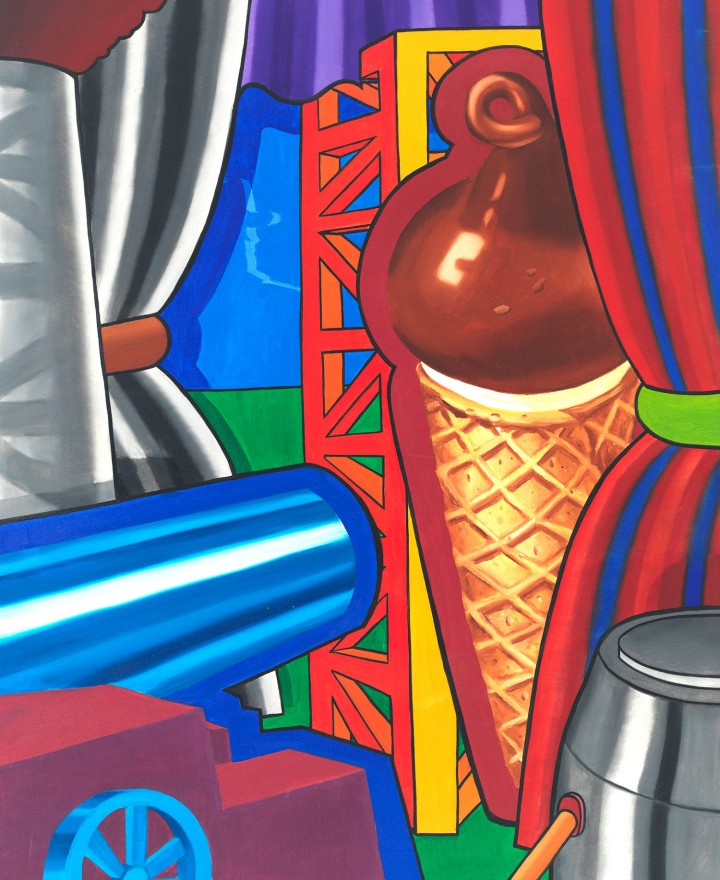For those who won’t be able to visit the exhibition “What Nerve! Alternative Figures in American Art, 1960 to Present,” on view at the RISD Museum of Art in Providence until January 4, 2015. The catalogue, co-published with D.A.P., will be an invaluable resource for tracing the narratives that the exhibition gathers together — that is, various regional gatherings of artists and collectives who, from the 1960s, have been making art outside of the country’s primary cultural centers, in localities such as Chicago, the San Francisco Bay Area, Detroit and Providence.
The exhibition — and catalogue — focuses on crucial exhibitions and happenings of the Hairy Who, Funk, Destroy All Monsters and Forcefield, whose vicissitudes are interspersed among those of stray-dogs artists such as Christina Ramberg, Elizabeth Murray, H.C. Westermann, William Copley, Gary Panter and Jack Kirby — figures who were significantly influenced by or were a crucial influence on the members of the four groups.
Introduced by the exhibition’s curators Dan Nadel and Judith Tannenbaum, and enriched by a number of essays, the volume is an exuberant journey across alternative figurative paintings, grungy images and psychedelic artifacts that opposed the monolithic canons of Minimal and Conceptual art by finding inspiration in comics, vernacular art, objects in natural and social history museums and non-Western art. Beginning with reproductions of Westermann’s suite of prints See America First (1968) — as Michael Rooks states in the catalogue, “a metaphysical progress of the nation’s conscience from one realm of awareness to another” — the volume displays curiosities and paraphernalia, such as collaborative exhibition posters by Hairy Who personnel Karl Wirsum, Jim Falconer, Art Green, Gladys Nilsson, Jim Nutt and Suellen Rocca; or scans of answers to the questionnaire that curator Peter Selz sent to each artists participating in the exhibition “Funk,” which he organized in 1967 at the Art Museum of the University of California, in Berkley. The question, “Do you know or care about what funk is? If so, what?” was answered by artist Peter Saul as follows: “Funk art is art that is not supposed to be any good, at least theoretically, but is obviously very good anyway.”
Mike Kelley’s post-Surrealist early works on paper and Jim Shaw’s psychedelic photocopies — the visual accompaniment to the music of Destroy All Monsters, “a romantic imitation of an art movement,” as Kelley and Shaw’s fellow Cary Loren states in the catalogue — form a bridge to Gary Panter’s “The Near Extinction and Salvation of the American Buffalo” (1981), a series of twelve two-sided paintings, satires juxtaposing the language of abstraction with the “depressing” history of Native Americans. Props and costumes from Forcefield’s performances close this collection of artistic experiences, which despite their misfit ethos, certainly deserve to be recounted.

